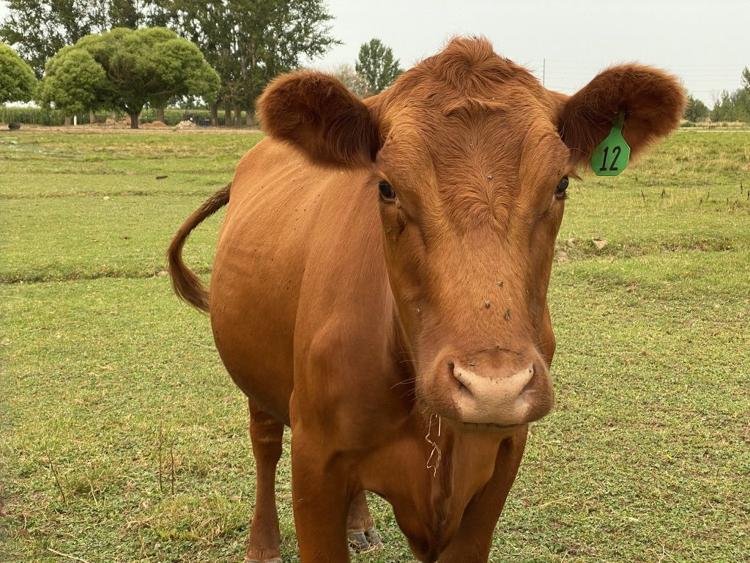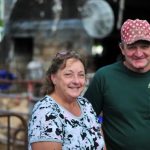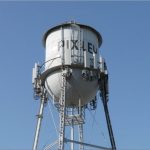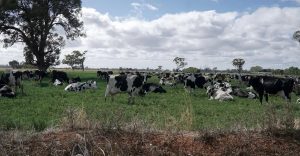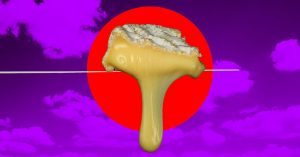
Idaho is home to more cattle than people, according to the Idaho State Department of Agriculture, with more than 1.8 million beef cattle and calves as of 2019 and 635,000 dairy cows. The 24,600 farms and ranches across Idaho span 11.5 million acres, and Idaho exports more than $212 million in beef every year and $417 million in dairy products.
The fire and drought have been particularly difficult for ranchers in northern Idaho like Ron Van Buren, who manages a herd of about 500 cattle near Tammany Creek outside Lewiston. One of the pastures for Van Buren’s cattle was two miles from the Snake River Complex fire line, a fire that has burned more than 109,000 acres outside Lewiston.
Van Buren said he has dealt with more wolves, bears and cougars on his grazing land as deer and other game are pushed out in search of forage. Cameron Mulrony, executive vice president of the Idaho Cattle Association, said falling ash from wildfire destroys forage that was already struggling because of drought.
The heat and smoke have a documented effect on the health of cattle, in terms of overall health and as an agricultural commodity.
“When it’s so hot and miserable out, they just don’t get out and eat as much as they should,” Van Buren said. That will affect “the rate of (weight) gain on the calves. They aren’t going to be as big this fall because of the weather and everything that’s happened.”
When high-quality grass is scarce, ranchers have to supplement with feed, including more minerals, salt and protein, which gets expensive.
“Normally we don’t start doing that until November or December, and this year we may have to start doing it quite a bit sooner because the forage out there just doesn’t have the food value to it that it should,” Van Buren said.
That may also lead to lower pregnancy rates for cows in the fall months, and lower birth rates in the spring.
With all of those factors in mind, Van Buren said ranchers across the industry are culling their herds and selling them at auction ahead of schedule. Dennis Rowland, co-owner of Cottonwood Livestock Auction in Cottonwood, Idaho, said he has seen that trend as well.
“It seems like everybody is about a month ahead of schedule. … Over the last six weeks we’ve sold over 1,000 mother cows, where we generally sell 500 of them,” Rowland said. “We’re a lot busier than we usually are this time of year.”
University of Idaho researcher says smoke has significant effect on dairy milk production
Available quality forage, heat and smoke also have an effect on dairy cows and the milk produced on a daily basis. There is plenty of research showing heat has an effect on milk production because cows eat less when heat stressed, but preliminary research is underway at the University of Idaho to determine the effects of wildfire smoke on dairy cows as well.
Amy Skibiel, assistant professor of lactation physiology in the university’s Department of Animal, Veterinary and Food Sciences, said this is the first year researchers have been able to collect data on wildfire smoke and cows. With a sample size of 30 dairy cows at a local farm and plenty of smoke from the Snake River Complex fires, Skibiel said they have documented effects on the cows this year.
The average dairy cow produces around 75 to 80 pounds of milk per day, Skibiel said. Researchers observed that when high amounts of smoke particulates were in the air over the course of a week, the cows were producing three pounds less milk on average per day, even when high temperatures were factored in as well.
“If you have a number of days where there’s a lot of wildfire smoke and a big herd, that can add up in terms of economic costs to the farm,” Skibiel said.
While many dairy farms have ways of mitigating the effects of high temperatures, such as misters, fans and small water features like ponds, there are fewer options available when it comes to fighting off smoke, Skibiel said. Even cows in dairy housing facilities usually have exposed roofs.
“People are starting to pay attention and starting to realize wildfire issues are going to increase for the foreseeable future,” Skibiel said, along with warmer temperatures on a regular basis. “I’m really hoping within the next year we have a better sense of the big picture.”
There also appear to be effects on general illness risk with smoke particulates, she said. Respiratory problems such as pneumonia are common, along with mastitis, which is an infection in the mammary gland that causes swelling, redness and problems with the quality of the milk. There are also observed relationships between smoke and increased risk of death in calves.
“Ours is the first study to look at the effects in dairy cattle, so there’s not data out there currently,” Skibiel said. “But with all of these huge mainstream large wildfires in the media, it’s relevant, it’s timely and people are paying attention now.”
